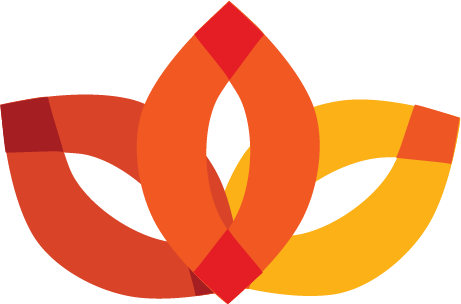

World café is a tool that invites stakeholders and other interested parties to explore questions and issues.
The tool is based on several principles of creativity, design and innovation:
Contextual understanding, Creative environment, Explorations of questions, Co-design.
These principles are explained below (under the section “How“).
World café involves going between different tables and discussing questions and issues that give the opportunity to explore various perspectives. It provides both participants and facilitators with greater understanding. The success of a world café session lies in listening for important insights, themes, and patterns that participants express.
Contextual understanding: When you truly understand the diversity of people and situations you are developing for and their particular issues, needs, values, and preferences, you are more likely to achieve results that are innovative.
Creative environment:World café is an informal meeting place that should be a creative, free, and safe zone.
When people feel free to speak without being judged or ridiculed, they can contribute to new innovations.
Explorations of questions: Knowledge develops through dialogues, e.g. through talking, listening, and questioning with respect to other people’s knowledge, understanding, and experiences. Find a set of questions or issues that are important for your particular context. Good questions support participants’ commitments and willingness to discuss.
Co-design: process in which people feel they have participated (e.g., have been listened to and took an active part) is more likely to achieve a successful result.
This is a tool for gender mainstreaming collaboratively created by two universities and some industry stakeholders, a gender mainstreaming checklist. The tool is designed to facilitate the integration of a gender and diversity perspective in projects and other activities. The app contains a checklist of practical gender mainstreaming in projects or other activities.
Gender observations is a tool to explore and bring to life differences in how women and men act and react in everyday interactions.
Despite a growing awareness of gender inequality there are still obsolete structures and practices within e.g. innovation systems. Acker for this reason proposed analysing gender systems in relation to structures, interactions, symbols, and identities.
Value exercise is a tool that encourages a discussion about your values, your team’s values, your organization’s values, and society’s values. The exercises can be a good way to begin a seminar or session, as an “ice breaker”, and as a way to stimulate new thinking. It can be varied in a number of ways, depending on issues, what statements are important to explore, and what prior knowledge and understanding participants have.
World café is a tool that invites stakeholders and other interested parties to explore questions and issues.
Developed by Flanagan in 1954, the Critical Incident Technique (CIT) is originally a technique for collecting observations on human behaviour to identify a particular event that somehow has been critical, either positively or negatively. The technique can be used in interviews, in focus groups, or in workshop settings within a work group.
Personas are fictional descriptions of a person whose goals, feelings, perceptions, experiences, etc. are relevant to the work group it is designed for. It is a commonly implemented design method to make the design team emphasize user experiences.
An action plan helps us go from visions to reality. It describes the way your team will use its knowledge, strategies, and competences to meet the objective of a gender equality and diversity aware innovation system. An action plan consists of a number of short- and long-term actions.